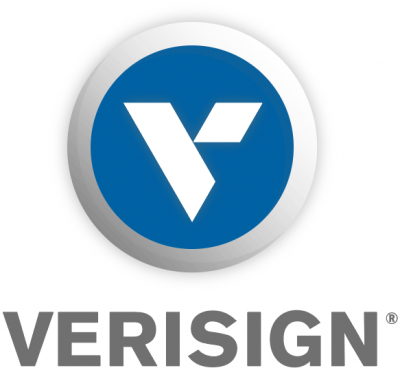

|
||
|
||
 State of US Small Business Online – For more information about this data and other small business trends, visit VerisignInc.com/SmallBiz
State of US Small Business Online – For more information about this data and other small business trends, visit VerisignInc.com/SmallBiz
(Click to Enlarge Image)Research undertaken recently on behalf of Verisign—the registry for .com and .net and network infrastructure operator for a variety of other domains—shows that smaller businesses are not getting all they can out of their Internet presence.
Such a result is hardly surprising. Small businesses are often concerned with just keeping the lights on. Computer and communications technology is complex and obscure, and not everybody wants to spend their weekend figuring out how to optimize a deployment.
But the research, conducted by San Mateo, CA-based Merrill Research, demonstrates that smaller businesses can nosh on some low-hanging fruit without pulling a muscle.
The study—called Benefits And Barriers Of Bringing A Small Business Online: Perspectives From Global Small Businesses—can be viewed directly here.
It was conducted in late May and early June this year and took in responses from 1,050 businesses of 1 to 49 employees, 150 each from China, France, Germany, India, Turkey, the United States, and the United Kingdom. Respondents had to be in the commercial sector (i.e., not from an educational, governmental, military, or non-profit organization), involved in marketing decisions, and have an online presence of some sort (e.g., a Website, social media account, eCommerce site, local review site, or blog).
The devil is always in the details, and some of the details turned out to be pretty interesting. For example, while most respondents understood that having a Website makes their businesses look more credible, many use social media either in addition to or instead of a Website.
To grok this result more fully, it is necessary to differentiate between social media sites that have destinations from those that don’t. Facebook FB -2.14% is the granddaddy of destination social sites. It has actual pages you can go to. If I’m Joe Small Business, and I put up a page called “Joe’s,” I can hang all sorts of relevant information there. Here’s an example of how a small business can use Facebook to hang out a shingle.
But for other sites, such as Twitter, there’s no there there. That is, upon arrival at Twitter, the surfer is confronted with a dynamic feed rather than a place. Businesses (and individuals) can tweet, but their messages are soon enough plowed under by more recent posts.
The essential wisdom here is that small businesses, most of which don’t have dedicated IT staff, think that using a social medium to host a Web presence is easier than doing it themselves. The site offers a simple template that just has to be populated. For those involved in eCommerce (selling things over the Internet) sites like Amazon.com, Etsy, Shopify, or eBay are as good a place as any to set up shop online.
All this is well and good, but what these responses show is that small businesses don’t realize how easy it is to get value from their domains. The economics are in their favor. Most domains are inexpensive to purchase (sex.com, on the other hand, is going to cost you), and hosts like Yahoo, GoDaddy, eNom, BigRock, and Web.com offer tools, services, and help to get going. GoDaddy’s pricing ranges from $12 to $48 per year.
The value of a domain for a small business is a lot higher than many realize. Not only can it form the basis for a home page, but it can point to a page on Facebook or other social destination site. Also, it can be used for branded email. If your company sells plastic model airplanes, and you’ve bought plasticmodelairplanes.com, you can turn your email into an advertisement. Every time you send a note to someone from [email protected], you’re telling them about your business.
By large majorities, survey respondents said they thought branded email helps make their businesses look more credible. Another interesting result was that, before creating their Website, a slight majority of respondents thought that the greatest barrier to the project would be a lack of technical knowledge, with other important barriers being cost, support, investment of time, and security. After the project, those concerns faded to the background, and ongoing Website maintenance rose to the fore. Some Web maintenance issues can be mitigated by setting up feeds that automatically refresh site content.
Around the world, small businesses are using Websites as their primary online presence, but many are prevented from doing all they can to develop their sites by a perception that such an investment is expensive, time consuming, and requires deep technical knowledge. Perhaps they don’t realize how easy it is to obtain low-cost—even free—services.
One more result deserves highlighting. It turns out (and Verisign loves this) that even in countries outside the United States—which all have country codes (e.g., .uk and .nl for the United Kingdom and Netherlands) as top level domains—most people prefer to own a domain with the .com suffix. Because it was there right at the beginning, .com has practically come to mean business.
Whatever the domain, it forms the core of an online commercial presence. A small company can buy a domain today, use it for email tomorrow, point it to a Facebook page the next day, and next week build out a hosted eCommerce site, scaling investment with business growth.
But it’s important to claim your brand first by nailing down your domain.
This article first appeared in Forbes.com. Reproduced here with permission.
Sponsored byVerisign

Sponsored byRadix

Sponsored byCSC

Sponsored byIPv4.Global

Sponsored byDNIB.com

Sponsored byVerisign

Sponsored byWhoisXML API
